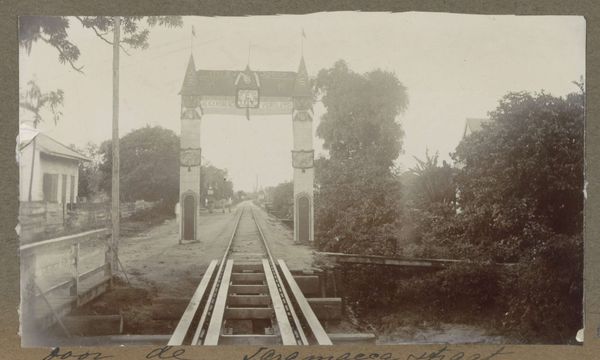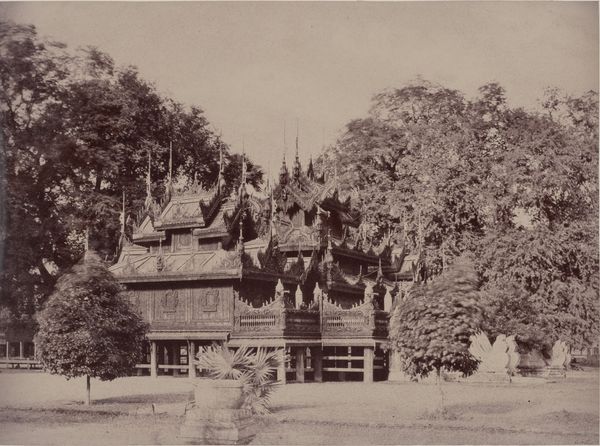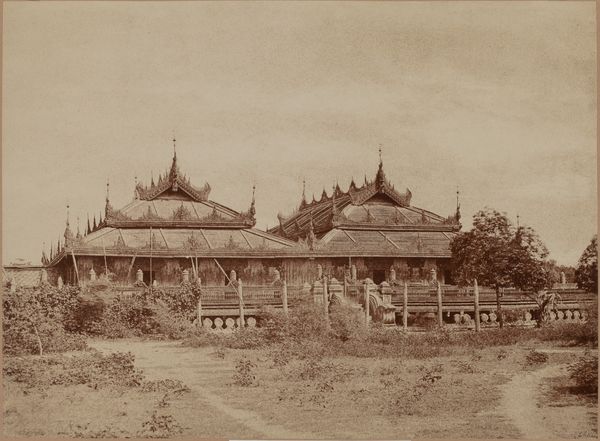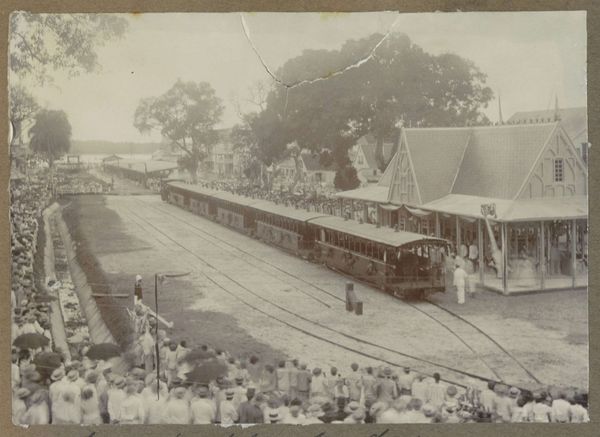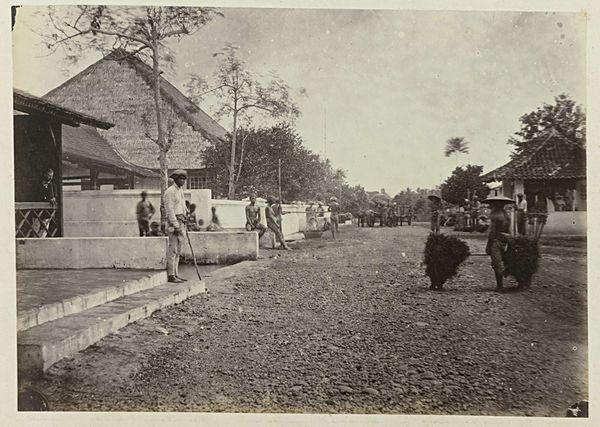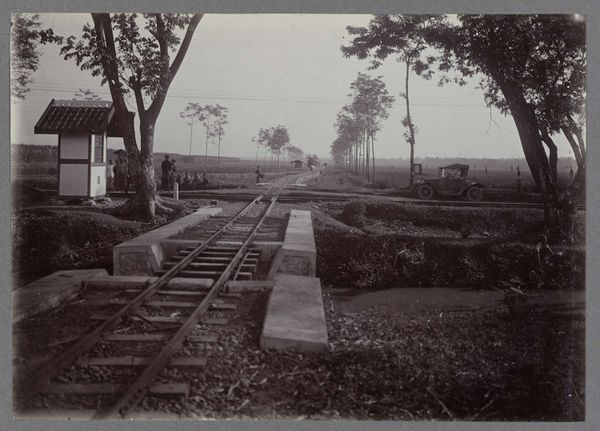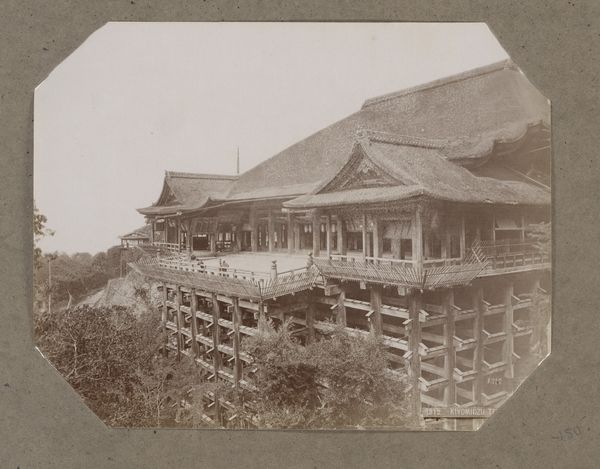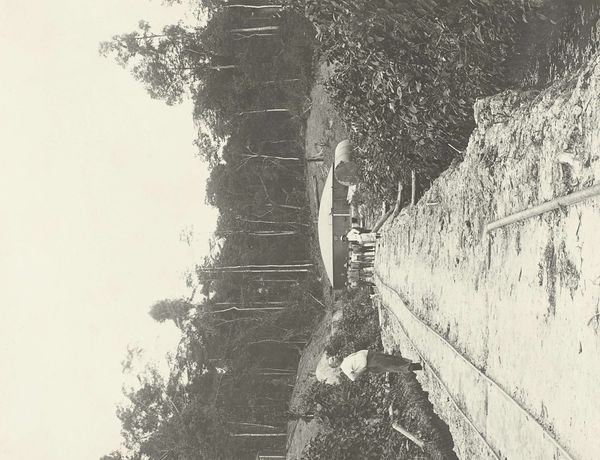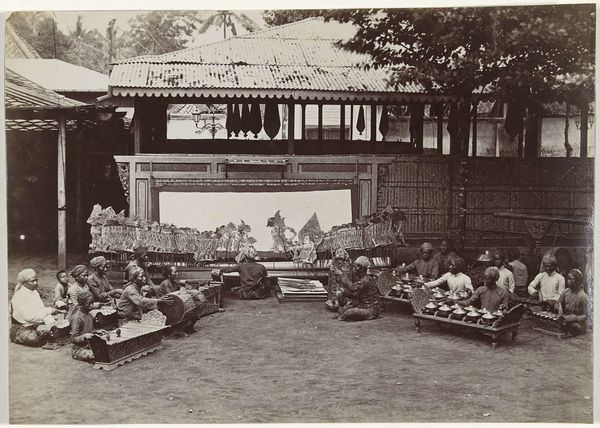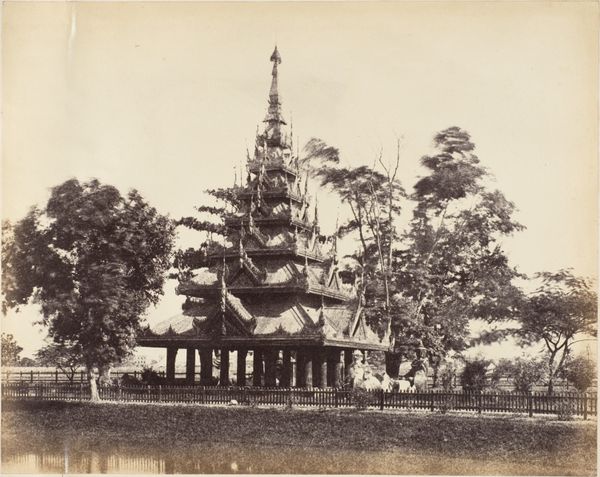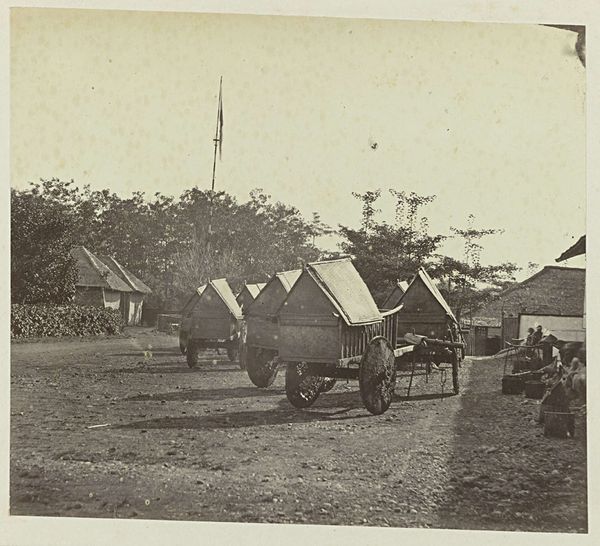
Erepoort in Paramaribo, opgericht ter gelegenheid van de opening van de Lawaspoorlijn (Landsspoorweg) op 28 maart 1905 c. 1905
0:00
0:00
eugenklein
Rijksmuseum
photography, albumen-print
#
landscape
#
photography
#
orientalism
#
19th century
#
cityscape
#
albumen-print
#
realism
Dimensions: height 114 mm, width 155 mm
Copyright: Rijks Museum: Open Domain
Editor: Here we have a photograph titled "Erepoort in Paramaribo," taken around 1905 by Eugen Klein. It's an albumen print showing a decorated gate built for the opening of the Lawa Railway. The scene has this slightly melancholic, historical feel, especially with the lone railroad tracks receding into the distance. What stands out to you in this piece? Curator: What I see is a visual manifestation of colonial ambition masked as progress. This image isn't just a depiction of infrastructure; it's a powerful statement about control and resource extraction. Look closely: who benefited from this railway? Who was displaced or exploited in its construction? Editor: It's easy to miss that context. I was focusing on the aesthetic elements, like the perspective. Curator: And that's precisely where the problem lies. We're conditioned to admire the composition, the 'orientalism,' but we often ignore the underlying power dynamics. Photography of this era often served to exoticize and normalize colonial exploitation. This photograph likely functioned as propaganda, showcasing the 'benevolence' of colonial rule while obscuring its darker realities. Do you notice how the perspective draws you in, almost inviting you to participate in this colonial project? Editor: I hadn’t considered it that way. So the "progress" it represents isn't neutral at all. It’s loaded. Curator: Exactly. We must question whose stories are being told and whose are being erased. This photograph then becomes an artifact of both technological advancement and colonial violence. The garlands on the arch feel almost ironic given that reading. Editor: Thinking about it now, I see how seemingly innocent landscape photography can carry a much heavier message about historical power and the construction of colonial narratives. Curator: And that's the first step towards a more critical and informed understanding of art history!
Comments
No comments
Be the first to comment and join the conversation on the ultimate creative platform.
